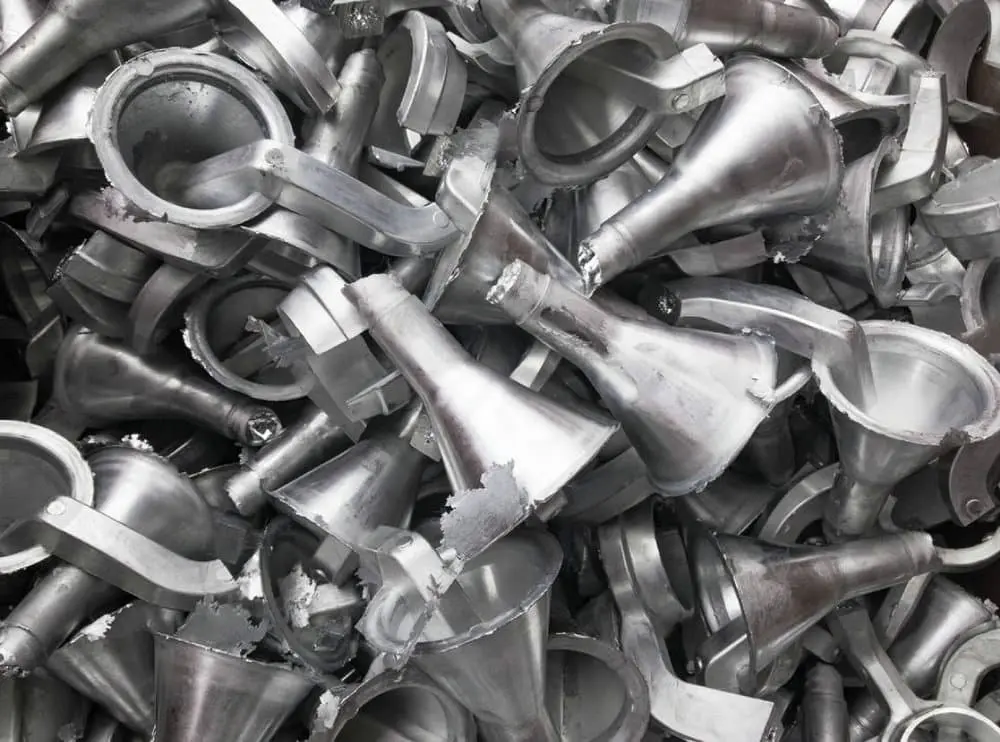สังกะสีละลายในเตาเหนี่ยวนำเป็นกระบวนการที่ใช้ในอุตสาหกรรมต่าง ๆ สำหรับการใช้งานเช่นการชุบสังกะสี, การฉายา, และการผลิตโลหะผสม. นี่คือประเด็นสำคัญบางประการที่คุณต้องรู้เกี่ยวกับการละลายสังกะสีในเตาหลอมเหนี่ยวนำ:
1. หลักการทำความร้อนเหนี่ยวนำ
เตาหลอมเหนี่ยวนำใช้การเหนี่ยวนำแม่เหล็กไฟฟ้าเพื่อสร้างความร้อน. กระแสสลับผ่านขดลวด, การสร้างสนามแม่เหล็กที่ทำให้เกิดกระแสวนในโลหะ, ผลิตความร้อนและละลายสังกะสี.
2. การควบคุมอุณหภูมิของสังกะสี
สังกะสีละลายที่อุณหภูมิค่อนข้างต่ำประมาณ 419.5 ° C (787.1°F). เตาหลอมเหนี่ยวนำให้การควบคุมอุณหภูมิที่แม่นยำ, ซึ่งเป็นสิ่งสำคัญสำหรับการป้องกันความร้อนสูงเกินไปและการเกิดออกซิเดชันของสังกะสี.
3. ประสิทธิภาพและความเร็ว
เตาหลอมเหนี่ยวนำมีประสิทธิภาพสูง, ให้ความร้อนอย่างรวดเร็วและละลายของสังกะสี. ประสิทธิภาพนี้ช่วยลดการใช้พลังงานและต้นทุนการดำเนินงาน.
4. ผลกระทบต่อสิ่งแวดล้อม
เตาหลอมเหนี่ยวนำให้การปล่อยมลพิษน้อยลงเมื่อเทียบกับเตาเผาเชื้อเพลิงแบบฟอสซิลแบบดั้งเดิม, ทำให้พวกเขาเป็นมิตรต่อสิ่งแวดล้อมมากขึ้น. พวกเขายังผลิตตะกรันน้อยลง, ลดขยะ.
5. คุณภาพของการละลาย
การหลอมละลายเหนี่ยวนำให้การละลายที่สม่ำเสมอและสม่ำเสมอ, ซึ่งเป็นสิ่งจำเป็นสำหรับผลิตภัณฑ์สังกะสีคุณภาพสูง. กระบวนการลดการปนเปื้อนและช่วยให้สามารถควบคุมองค์ประกอบของโลหะผสมได้ดีขึ้น.
6. ข้อควรพิจารณาด้านความปลอดภัย
ควันสังกะสีอาจเป็นอันตรายหากสูดดม, การระบายอากาศที่เหมาะสมและระบบสกัดควันจึงเป็นสิ่งจำเป็น. นอกจากนี้, ผู้ประกอบการควรใช้อุปกรณ์ป้องกันส่วนบุคคล (ชุดป้องกันส่วนบุคคล) เพื่อหลีกเลี่ยงการสัมผัสกับสาดโลหะและควันที่หลอมเหลว.
7. ประเภทของเตาเหนี่ยวนำ
- เตาเหนี่ยวนำแบบไร้คอร์: เหมาะสำหรับการละลายสังกะสีขนาดเล็กถึงขนาดกลาง. พวกเขามีความยืดหยุ่นและเวลาตอบสนองอย่างรวดเร็ว.
- เตาเผาเหนี่ยวนำช่อง: ดีกว่าสำหรับการละลายอย่างต่อเนื่องและถือสังกะสีในปริมาณมาก. พวกเขามักจะใช้ในโรงหล่อที่มีอัตราการผลิตสูง.
8. การเลือกเบ้าหลอม
การเลือกวัสดุเบ้าหลอมเป็นสิ่งสำคัญ. โครเคิลกราไฟท์และเซรามิกมักใช้สำหรับการละลายสังกะสีเนื่องจากความต้านทานสูงต่อการช็อกความร้อนและการพังทลายของสารเคมี.
9. พาวเวอร์ซัพพลาย
เตาหลอมเหนี่ยวนำต้องใช้แหล่งจ่ายไฟที่สามารถจัดการกับความต้องการพลังงานเฉพาะสำหรับการหลอมละลายสังกะสี. แหล่งจ่ายไฟจะต้องตรงกับกำลังการผลิตของเตาและอัตราการหลอมละลายที่ต้องการ.
10. การบำรุงรักษาและการหยุดทำงาน
การบำรุงรักษาเตาแบบเหนี่ยวนำเป็นประจำเพื่อให้แน่ใจว่ามีประสิทธิภาพในการทำงาน. ซึ่งรวมถึงการตรวจสอบขดลวด, แหล่งจ่ายไฟ, ระบบทำความเย็น, และเบ้าหลอมสำหรับการสึกหรอและความเสียหาย.
11. พิจารณาค่าใช้จ่าย
ในขณะที่เตาหลอมเหนี่ยวนำมีต้นทุนล่วงหน้าสูงกว่าเมื่อเทียบกับเตาเผาแบบดั้งเดิม, ประสิทธิภาพการดำเนินงานของพวกเขา, ลดการใช้พลังงาน, และผลกระทบต่อสิ่งแวดล้อมที่ลดลงอาจนำไปสู่การประหยัดต้นทุนระยะยาว.
12. การใช้งาน
- การชุบสังกะสี: สังกะสีละลายสำหรับการเคลือบเหล็กและเหล็กเพื่อป้องกันการกัดกร่อน.
- การฉายา: ผลิตชิ้นส่วนที่หล่อด้วยสังกะสีสำหรับยานยนต์, อิเล็กทรอนิกส์, และอุตสาหกรรมอื่นๆ.
- การผลิตโลหะผสม: การสร้างโลหะผสมที่ใช้สังกะสีสำหรับแอพพลิเคชั่นอุตสาหกรรมต่างๆ.
การทำความเข้าใจแง่มุมเหล่านี้จะช่วยให้คุณใช้เตาหลอมเหนี่ยวนำได้อย่างมีประสิทธิภาพสำหรับการละลายสังกะสี, สร้างความมั่นใจในความปลอดภัย, ประสิทธิภาพ, และการผลิตคุณภาพสูง.








